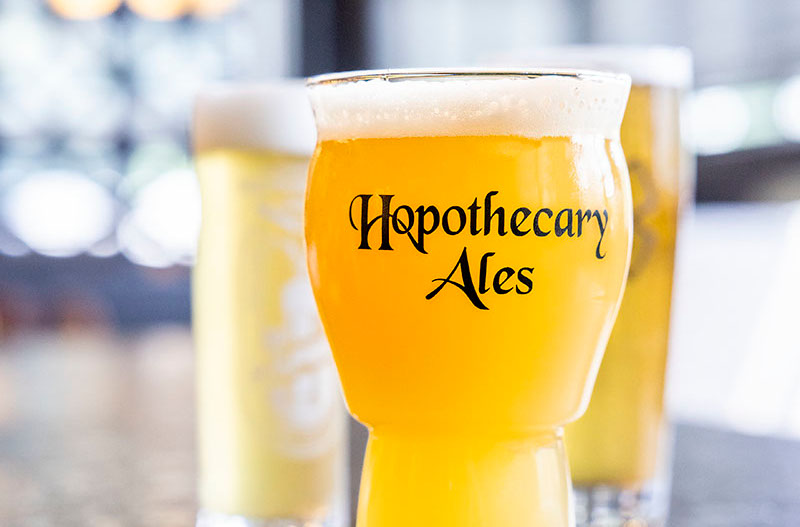Historically, North Reading hasn’t been known as a medicinal hub, where people would come from far and wide seeking remedies for bad health; the town’s biggest claims to fame are mostly shoes and apples. But just six-and-a-half miles away in Wilmington, once upon another period, farmers cultivated the bulk of the United States’ hops, so it’s only proper that North Reading today is home to one of the state’s newest breweries: Hopothecary Ales, founded by brothers Mike and Steve Gabardi in 2019 and in full operation as of late 2021.
“I don’t know if there were a lot of medical establishments or apothecaries around this area, back in the day,” says Kevin McComiskey, Hopothecary’s brewmaster and one of its founding brewers, “the day” being the 1700s. “But all the hops were grown right around here, so it does have a pretty rich brewing history.”
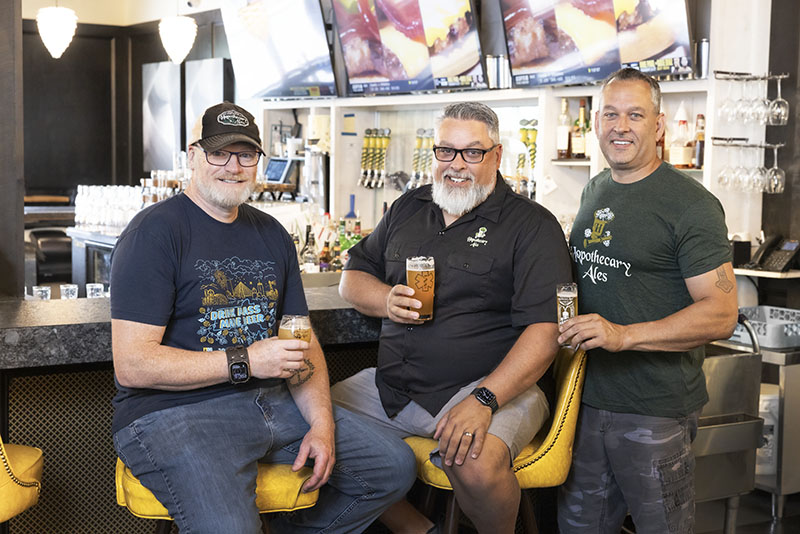
Until the Gabardis opened Hopothecary Ales’ doors, though, North Reading didn’t have as rich a brewing present. The breweries closest to the town are within the range of 15 to 20 minutes out—not exactly a hike, but not exactly local, either. More than 200 breweries call Massachusetts home, and in smaller towns, they act like meeting houses. Adding one more to the list makes perfect sense. But being one brewery of 200 in a state this size presents identity challenges: how to stand out from neighboring breweries, especially those with the same predilection for hoppy beers as the Hopothecary team’s.
The first quality is fused right into the name, and ties back to McComiskey and Steve Gabardi’s professional background: They worked together for 20 years on the transplant team at Brigham and Women’s Hospital in Boston, across from The Mission Bar & Grill—the very spot where they first began talking about starting their own brewery. “During that time while we were tinkering in the kitchen, breweries like Tree House, Trillium, Coastal Mass, and Vitamin Sea opened and started producing some outstanding NEIPAs,” says Gabardi, referring to the popular New England IPA substyle. “But we knew we could make killer NEIPAs, too.”
Every brewery needs personality. Gabardi is a transplant pharmacologist; McComiskey is a transplant coordinator. Building Hopothecary Ales’ identity out of that background came naturally to them, so the brewery leans fully into the doctorly motif. It’s in the can art, and on the brewery’s walls; “The perfect prescription to quell the thirst,” reads a logo featuring a bewhiskered doctor raising a sudsy imperial pint glass.
It’s in the beers’ names, too: Simple Solution, Dr. Walker’s Thirst Anesthetic, Remedy 42, Paregoric. It’s also there in the way the beer is served. Gabardi takes special pride in the design of the beer flight paddles. “They come with a prescription pad to list your beers,” he says, “complete with a physician signature.”
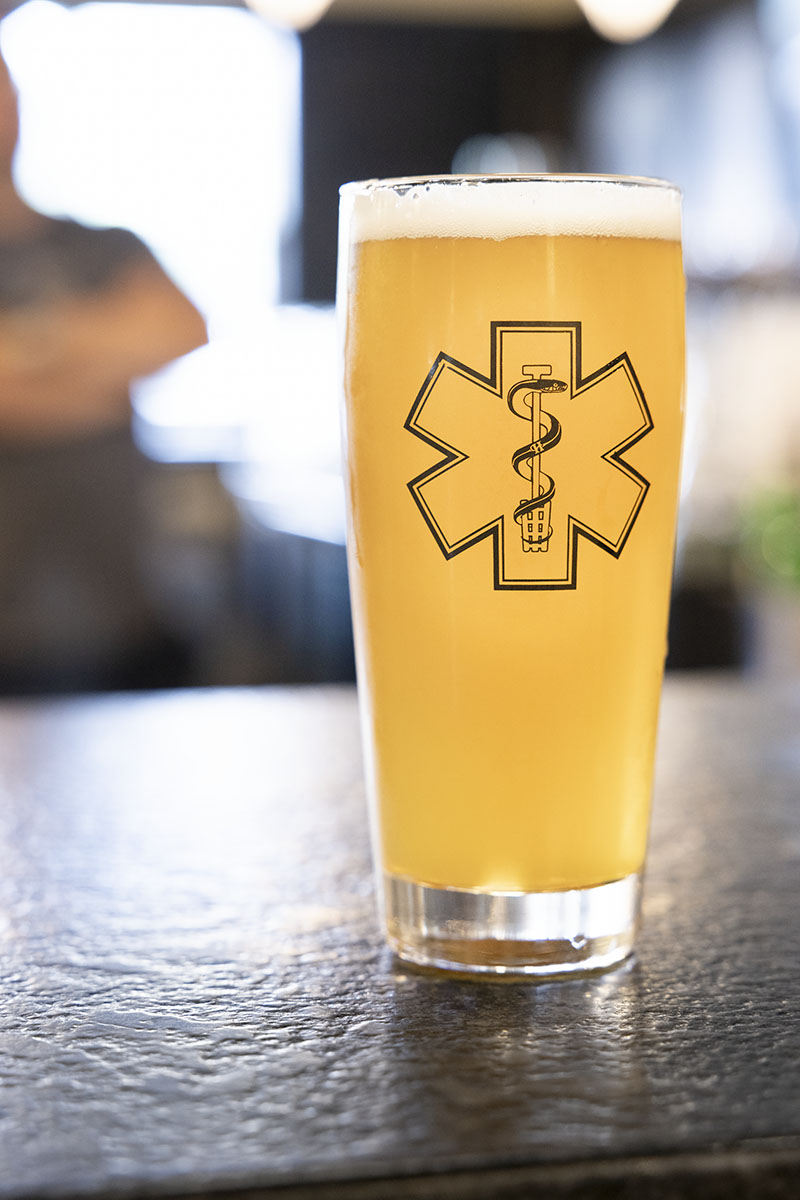
A gimmick is only as good as the business it’s promoting, though, so when Gabardi and McComiskey started picturing Hopothecary’s taproom, they aimed for scale. “We have a really big space,” says McComiskey. “We have an outdoor space. We have four different sections. We’ve got two bars, and we have a full liquor license. We have a full kitchen.” They have arcade games, too, so it might be easier to list what they don’t have than what they do, but suffice it to say, the brewery has atmosphere, which Gabardi prizes almost over the beer. “Great beer is awesome,” he declares, “but drinking it in a great atmosphere is just as awesome.”
McComiskey thinks Hopothecary Ales’ sheer dimension sets it apart from its peers; if a group of people stop in for a drink, there’s something on the menu for all of them, whether it’s beer of varying styles, from IPAs to hefeweizens, or different beverages entirely. The Hopothecary team thinks about its customers’ drink preferences like insurance options. “We got wine, we got liquor, we got food, we got anything you want,” McComiskey adds.
Gabardi agrees and takes the breadth of the brewery’s offerings a step further. “The fact that we have a full kitchen and full liquor license also means that we are more inclusive,” he says. “You don’t need to exclude your buddy that doesn’t drink beer because there will be something for him or her at our place. This is a big plus for us.”
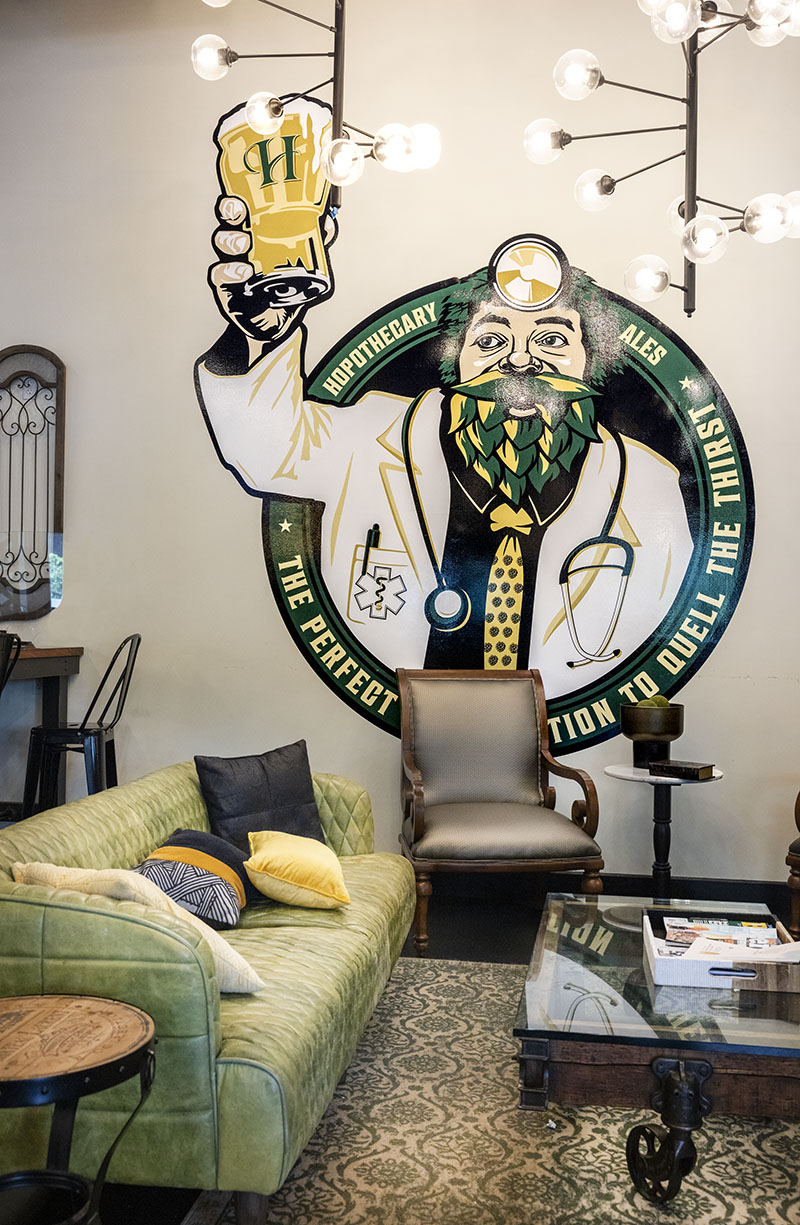
Inclusion of other kinds is increasingly important in craft-brewing culture. The new push is for breweries to make themselves welcoming to people of all backgrounds, no discrimination allowed. But making people who don’t drink beer feel at home is important for building community, too, and community is fundamental for craft beer. “We want local people to gather and come together, and enjoy each other’s company over a pint, again, kind of how it was back in the day,” McComiskey points out.
This sensibility extends past their clientele to include other brewers, too. Setting up shop roughly equidistant from breweries like Beverly’s Coastal Mass. Brewing, Andover’s Oak & Iron Brewing Co., and Tree House Brewing Company’s new Tewksbury location, is a risk. That’s a lot of competition nearby, and only a scratch on the surface of the region’s many breweries. But neither McComiskey nor Gabardi see their peers as their competition; they see things in terms of camaraderie. “Beer isn’t competition to me,” McComiskey explains. “It’s not something that I feel should be competed over, and say, ‘Oh, my beer’s better than your beer because it was judged by this person.’”
McComiskey is thinking about competition from a beer festival standpoint. From a business standpoint, he knows competition is inevitable, but he also knows who craft brewers should challenge together: the big guys. “The rivalry should be craft versus InBev, you know?” Gabardi takes the same view. The owner of one of Gabardi’s standby local breweries voiced a concern to him about Hopothecary Ales siphoning off some of its business, before the company opened. After opening, it seems the other brewery’s team has seen, as Gabardi says, borrowing from the old adage, how “the rising tide lifts all boats.” “There are still more people out there that drink beer from macrobreweries than drink from microbreweries,” Gabardi points out. “We have plenty of folks to convince that micro and local are better.”
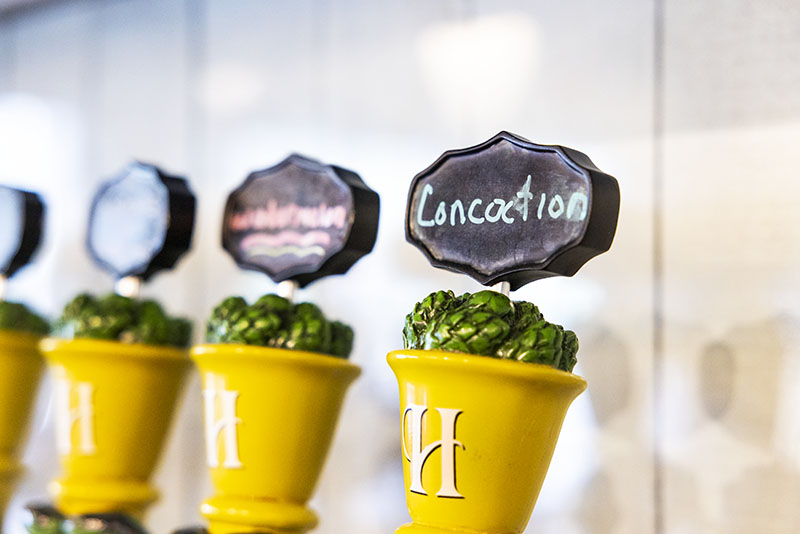
So what do he and McComiskey consider “better?” Hopothecary Ales does a little bit of everything: Kölsch, Italian Pilsner, Blonde Ale. But the name gives away their passion for all things hop-forward, and in hop-forward beer, there’s plenty of room for innovation, creativity, and expression. Take Tonic, one of Hopothecary Ales’ basic IPAs: McComiskey uses that recipe as a vehicle for Hop Transplant, a rotating series of IPAs made of different three-hop combinations.
Look at the menu, and you’ll find classics, like Citra-Simcoe-Mosaic; you’ll also find newness, like Nectaron, one of the hot new hops on the market, and one of the hardest to get. “It was always supposed to be the hop that was in Snake Oil,” McComiskey says of Hopothecary’s Professor Lu’s Snake Oil IPA, “and we couldn’t get it.” It took years for him and Gabardi to get their hands on some, but it was worth the wait and the effort because it’s a distinguishing hop only a handful of other Massachusetts breweries are using.
McComiskey and Gabardi came to love IPAs through their experiences with standout examples of the style, like Heady Topper, and especially on trips to Portland, Maine. “When I first had Reciprocal from Bissell Brothers, I remember letting it sit for 10 minutes waiting for it to ‘settle,’” Gabardi recalls. “But it stayed hazy. It was a juice bomb, and I was hooked!”
McComiskey keeps that commitment to IPA in Hopothecary’s lineup. “My goal is to always have like six hoppy styles of beer on tap,” he says. Fizzy, foamy, hazy concoctions fit the brewery’s character, after all; there’s something palliative about a frosty beverage loaded with citrus flavors. But if heavy-hitting hops aren’t to your taste, don’t worry—the brewery caters to all tastes. McComiskey and Gabardi have the cure for what “ales” you.
303 Main St., North Reading, 978-207-1254, hopothecaryales.com

